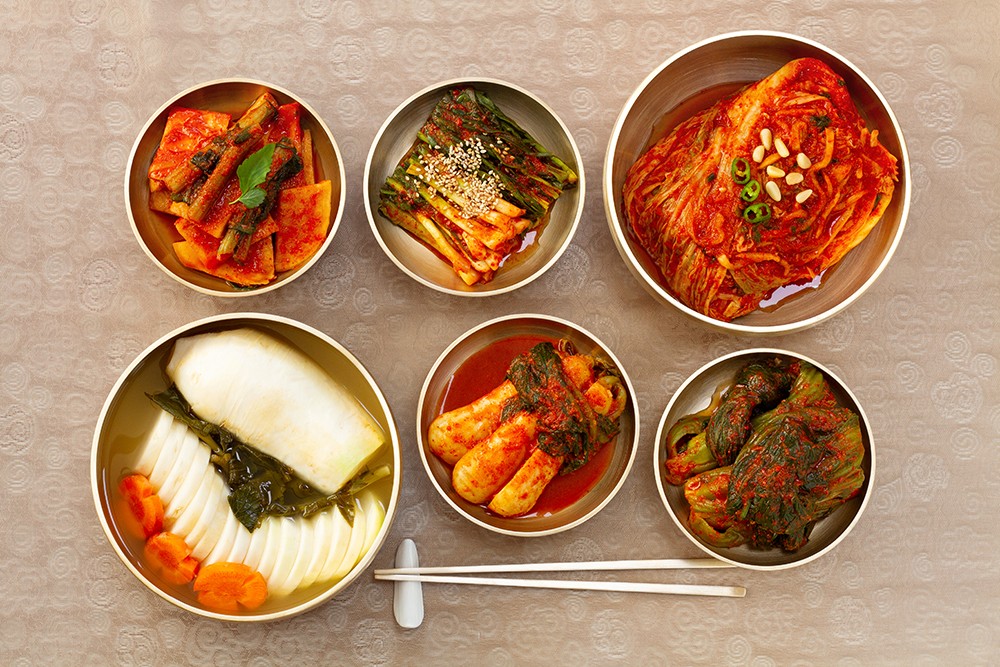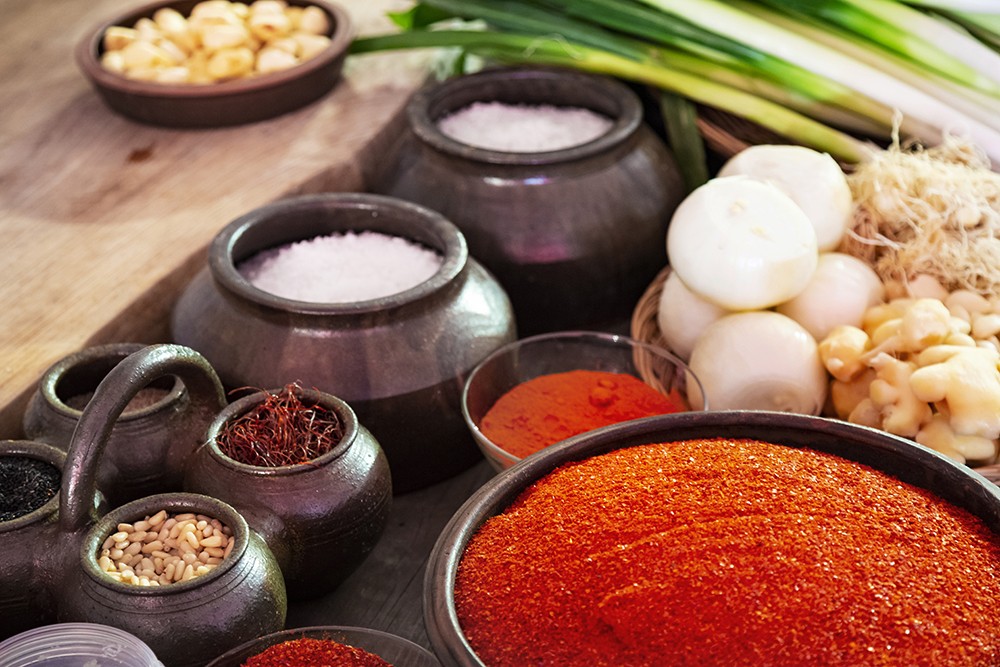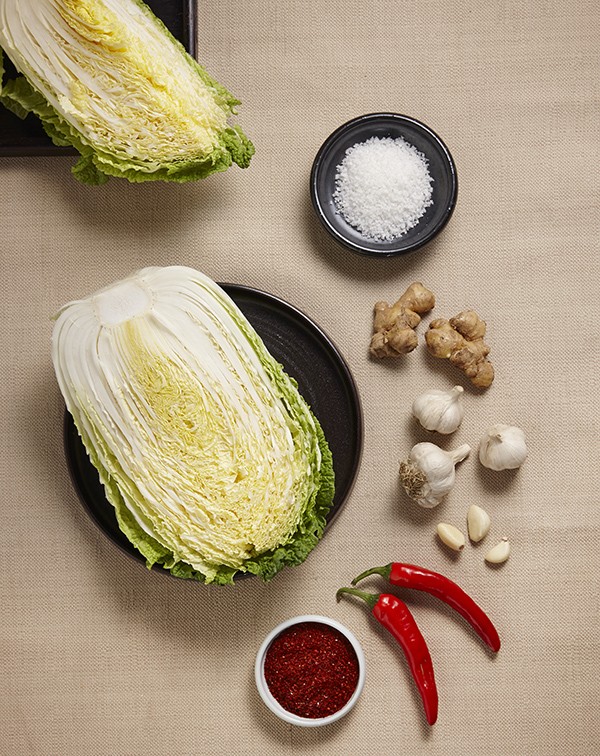한식 읽기 좋은 날
Vol 57. Fermentation and Kimchi
Turning Kimchi, the Ultimate Korean Soul Food, into a Soul Food for All
Captivated by HANSIK
The status of kimchi on the international stage today is nothing short of amazing. In 2008, it was designated as one of the “World’s Healthiest Foods” by the American health magazine Health. In 2015, it was introduced by Time magazine as one of the top six foods in the world that can make people happy. In 2017, kimchi was referred to as one of the world’s top five superfoods by the UK’s The Guardian. In 2021, the US State of California designated November 22 as Kimchi Day—the same as the date in Korea—and was soon followed suit by Virginia and New York. How did kimchi, which is quite spicy and salty and has a distinct smell, manage to captivate international tastebuds?
Article Noh Yunyoung (Editorial Team) Sources World Institute of Kimchi website (Key Statistics), Encyclopedia of Korean Culture

Rise to fame through the Olympic Games
Kimchi is a traditional fermented food of Korea that is made by salting a vegetable (cabbage, radish, cucumber, etc.) and then mixing it with pepper flakes, jeotgal, and various other seasonings. Because Korean winters are not conducive to growing or storing vegetables, several processes are incorporated, such as drying, salting, or fermentation, to make vegetables keep longer. One of the most widespread examples of this is kimchi, which was made not only out of cabbage but also radishes and cucumber and prepared in various ways, such as without pepper flakes, due to the long-standing and practical tradition of using seasonal vegetables and techniques that are best-suited to the needs of a particular region/climate.
Kimchi first entered the international public eye in 1988 due to the Seoul Olympic Games, which brought a level of international attention to Korea that prompted the government to start laying the foundations for industrializing and commercializing Korean food products for the global market. In 2000, Korea exported USD 79 million worth of kimchi to Japan and the US. In July 2001, the CODEX Alimentarius Commission adopted a standard for kimchi, indicating its recognition as an international product. In December 2013, the UNESCO Intergovernmental Committee for the Safeguarding of the Intangible Cultural Heritage voted to register “Kimjang, Making and Sharing Kimchi in the Republic of Korea” as an Intangible Cultural Heritage of Humanity, thereby cementing the notion of kimchi as something to be protected and practiced by the global community.
The recent revival of Hallyu in mediums other than K-pop and dramas has brought new attention to bibimbap, gochujang, and other Korean foods that are low in calories. Coverage of kimchi by the aforementioned health outlets itself indicates how far kimchi has come in terms of visibility. MAFRA, the Presidential Council for Future & Vision, and other central government bodies are undertaking a project on the globalization of Korean food, of which kimchi is a key subject. The international status of kimchi is also apparent in trade-related statistics. As of this article’s publication, kimchi is exported to 89 countries, and kimchi exports totaled approximately USD 160 million in 2021. The largest importer of Korean kimchi is Japan, which accounts for 54% of total exports, followed by the United States (17%), Hong Kong (6%), Taiwan (4%), and Australia (4%).


Things that must be done for kimchi’s globalization
The “K-kimchi” boom is not, however, without its problems. One major issue is the sharp increase in imports of Chinese-manufactured kimchi, not only by Korea but many other countries, which is having a detrimental effect on Korea’s kimchi exports. According to the World Institute of Kimchi (WIK)’s Key Statistics page, kimchi imports exceeded exports for the period from 2017 through 2020. Eight out of every 10 restaurants in Korea use Chinese kimchi because it is cheaper than its domestically-produced counterpart. In short, China’s kimchi has taken over the restaurant industry worldwide with its low prices. The WIK pointed out that Korean-made kimchi is hard-pressed to compete with the Chinese version in terms of price due to the high prices of Korean-grown raw materials, labor, and equipment and the implementation of a food safety management system (HAACP; Hazard Analysis Critical Control Points). This problem is already manifesting in the statistics: according to the results of a survey on the status of the kimchi industry conducted in 2020 and announced by the Korea Rural Economic Institute in February 2022, consumption of domestic kimchi (350,273 tons) was almost double that of imported kimchi (192,936 tons) as late as 2010. By 2018, however, domestic kimchi consumption (399,395 tons) had declined to a level only slightly higher than the same figure for imported kimchi (290,742 tons).
Another problem that must be addressed is the changing domestic market. Recently, Koreans have begun favoring a “simplification of kimjang,” resulting in less homemade kimchi and higher demand for kimchi products. According to the Statistics on National Health of the Korea Health Industry Development Institute, the average amount of kimchi consumed per person per day was 112.4 grams in 2008. By 2018, this had dropped by 23.2% to 89.2 grams. Consumption by people in their 20s and under is dropping even more rapidly. The average annual rate of decline of kimchi consumption for the period from 2008 to 2018 was 6.51% for ages 1 to 2, 4.46% for ages 19 to 29, 3.77% for ages 3 to 5, and 3.44% for ages 6 to 11. The government is carrying out education-related initiatives to improve children and teens’ (future consumers) perception of kimchi, but such efforts have been broadly criticized as inadequate.
There was also a period of mud-slinging with China and Japan over “kimchi suzerainty.” Japan argued for a time that kimchi is a descendant of tsukemono, a pickled vegetable dish, but has since backed down from this stance somewhat. China, through the Northeast Project of the Chinese Academy of Social Sciences, argued that it was the country of origin because of pa’o ts’ai, a salted food that is famous in its own right but not in connection with kimchi.

Responsiveness to global trends
Why, one may ask, are some countries so obsessed about claiming kimchi? The reason lies in kimchi being one of the biggest beneficiaries of the global “well-being” fad. Its main ingredients (cabbage, radish, green onion, garlic, etc.) are rich in vitamins, minerals, and fiber. The lactobacilli that are produced during fermentation are effective in preventing constipation and intestinal cancer, and kimchi also helps with weight loss due to it being low in calories and high in fiber. Garlic and green onion are rich in antioxidants, vitamins, and antibacterial substances, which makes them helpful in preventing signs of aging and lowering the body’s harmful cholesterol levels to prevent adult diseases. Fermented kimchi also includes amino acids that stimulate the brain, with some studies showing that kimchi expedites cerebral functions.
Experts point out that, in order to be spotlighted to a greater extent on the global stage, Korea’s kimchi industry needs to be more responsive to global trends. Ha Jae-ho, the third director of the WIK, offered the following suggestions for the kimchi industry to, as the Korean saying goes, avoid being “a frog in a well”: namely, exports focused on mat kimchi (cut cabbage kimchi) as opposed to pogi kimchi (whole cabbage kimchi), emphasis on the quality and cleanliness of Korean-made kimchi, development of kimchi types and ways of eating it that are culture-specific, standardization of kimchi quality and active use of government-designated standards for kimchi, and more events on kimchi. All of these suggestions have one point in common: if Koreans love kimchi, others have to be able to love it as well.
For example, in Western countries, emphasis on kimchi as a naturally-fermented product is a cause for concern. In the early stage of production, which lacks sterilization procedures, there is no way of blocking the formation of pathogens with low pH levels. Generally, the lactobacilli in kimchi are activated naturally, after which they block the growth of harmful bacteria: for freshly-made kimchi, however, the lack of fermentation can have dangerous consequences in the event of pathogens. To alleviate this concern, Korea needs to present evidence (based on thorough inspection and research) that kimchi is safe and widely publicize such outcomes. In short, more effort is needed to attract global consumers and make them want to enjoy kimchi of their own volition. It may be the only (and best) way for Korea’s favorite soul food to become a soul food for everyone.










